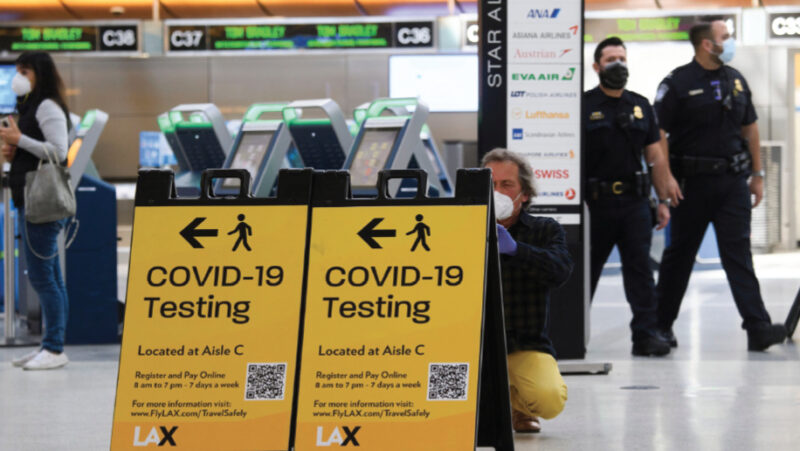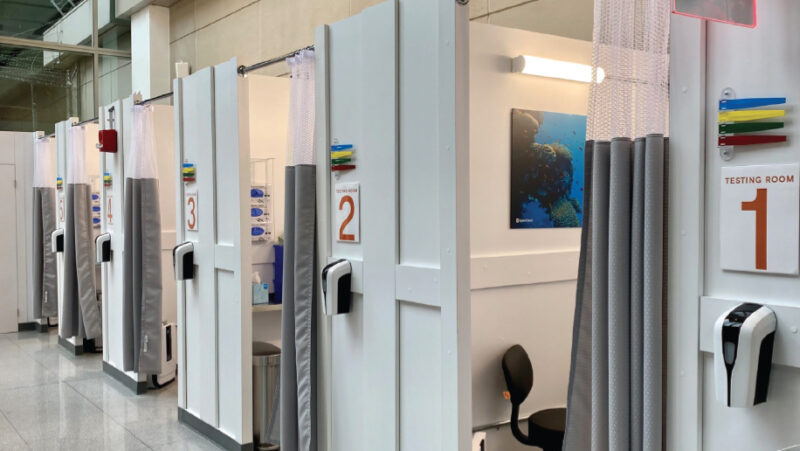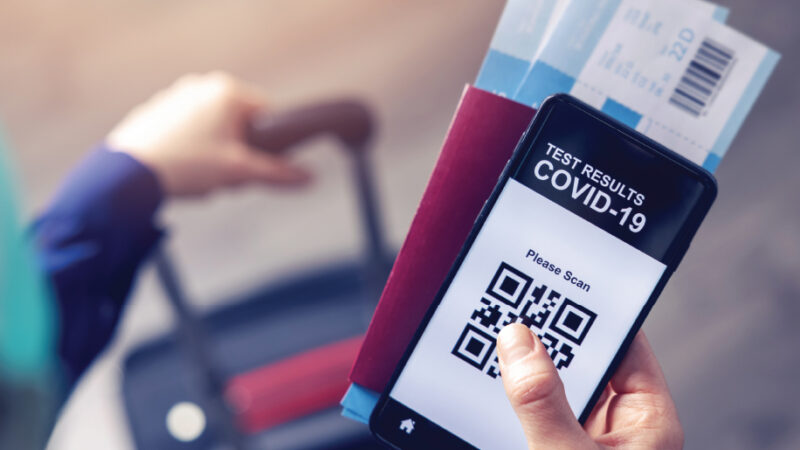Testing 1-2-3
For now, COVID-19 tests are likely to be part of your travel experience. Here’s your guide to what to look for and where to find it
June 9, 2021

With the arrival of the first effective SARS-CoV-2 vaccines late last year, the end of the pandemic-induced travel slowdown appeared to be just on the horizon. Now, six months into an intense global vaccination campaign, nearly 1.5 billion doses have been administered worldwide and some countries and regions are already opening up. The positive impact on travel is thankfully beginning to show, with leisure bookings on the rise and bright spots glimmering in the business travel sector.
But wait a minute. With all this good news, why is so much of the world still in pandemic mode? In some regions cases are still spiking at alarming rates, even as the curve bends downward in many developed countries – most notably in the US, formerly the virus’ global hotspot. And even here, ever-changing mask mandates and pre-travel testing requirements are still in place, at least as we go to press, including for people who have received vaccinations.
Although a billion-plus shots have already been delivered and millions more are being administered practically every day, we still labor under the constraints put in place months ago when public health officials had no better options. The ambiguity has many travelers asking, “When can we ditch the masks and swabs and go back to a normal life?” The vaccines which were developed at lightning-speed were supposed to tamp down the raging pandemic fires, and eventually they probably will. But for now, that promise has not yet been realized.
All About the Data
The apparent disconnect is down to one word: Data. Or more precisely, three words: Lack of data. As is the case with so much of the coronavirus, there is a great deal we don’t know. In the deadly winter of 2020, the initial goal of vaccine developers was saving lives; in that regard the current vaccines are an unqualified success. According to data from the CDC at the end of April 26, the rate of hospitalizations and deaths among people who became infected despite being fully vaccinated was 0.0009 and 0.0001 percent, respectively.
How effective the vaccines are at preventing an infected person from passing this highly-transmissible virus along is another question, one for which science still doesn’t have a definitive answer. While the debate continues, there are some hopeful signs emerging from the limited data available. Agence France-Presse reports that a study of British health workers revealed an 86 percent reduction in asymptomatic infection after two doses of the Pfizer vaccine. An even larger study among the general population of Israel showed 94 percent efficacy. Further research out of Israel found even when a vaccinated person becomes infected, the viral loads inside the individual’s nose are very low, likely non-transmissible.
Nevertheless, according to Hans Kluge, the World Health Organization’s Europe director, progress against the coronavirus pandemic remains “fragile.” In a press briefing reported in Agence France-Presse, Kluge said, “Right now, in the face of a continued threat and new uncertainty, we need to continue to exercise caution.” At the same time he stressed that the vaccines currently available are effective against whatever new strains that have been identified thus far, adding that all COVID-19 variants can be controlled with the same public health and social measures currently in use. “Vaccines may be a light at the end of the tunnel, but we cannot be blinded by that light,” he said.

In a move that surprised some experts, the CDC recently announced relaxed mask guidelines, holding that masks aren’t necessary for vaccinated people outdoors unless it’s crowded, nor indoors among small gatherings of inoculated individuals. And some infectious disease experts are citing the rapidly declining number of cases in the US, together with the vaccine rollout, as pointing to a time when the government may ease its recommendations across the board.
But will such a change be a harbinger of further easing of testing requirements and mask mandates for travelers? Chances are, not anytime soon. For one thing, it’s early days yet for the researchers to be able to say with confidence that just being vaccinated will render an individual incapable of transmitting the virus.
Then as we all know, there’s the matter of where in the world travel takes us. While falling infection rates and lower hospitalizations in some countries may prompt relaxed travel requirements, other regions are seeing spikes in the disease. So it is likely that, at least for the foreseeable future, tests and masks will continue to be the rule rather than the exception for travel in every mode, and especially for air travel.
COVID Testing ABCs
Since they’re likely to be with us for a while, here are a few things travelers need to know about the testing process and what may be required for travel.
• Look for a PCR (polymerase chain reaction) test. PCR tests are most reliable for detecting active COVID-19 infections, so are most widely accepted for travel. The tests can be expensive, and getting results back can take time – a hassle when most destinations require tests within 72 hours of travel.
• The Nucleic Acid Amplification Technology (NAAT) test is the same technology as a PCR test, but is not specifically a PCR test. Some destinations that require a PCR test may not accept this test.
• The alternative rapid antigen test offers quicker turnaround and generally cost less, but are also less likely to be accepted at ports of entry.
To speed travelers on their way, many airlines and major US airports are offering on-site testing. Here are some of them:

New York, Boston & Beyond
Health and wellness company XpresSpa made lemonade out of pandemic lemons by turning its shuttered airport wellness spas into COVID-19 testing facilities. Under the brand XpresCheck, the company operates 13 clinics in 11 major US airports, offering a rapid PCR-based testing platform, the Accula test from Thermo Fisher Scientific, which is processed on-site and returns test results in as little as 30 minutes.
Currently travelers can find XpresCheck sites at:
• Boston Logan International Airport (BOS) with two terminal locations
• Denver International Airport (DEN) located after security
• Houston: George Bush Intercontinental Airport (IAH)
• Newark Liberty International Airport (EWR) with two terminal locations
• New York: John F. Kennedy International Airport (JFK)
• Phoenix Sky Harbor International Airport (PHX)
• Ronald Reagan Washington National Airport (DCA)
• Salt Lake City International Airport (SLC) located after security
• San Francisco International Airport (SFO)
• Seattle-Tacoma International Airport (SEA)
• Washington Dulles International Airport (IAD)
Tests are available by appointment or walk-in based on availability. According to the XpresCheck website, the rapid molecular COVID test is $200. The PCR and blood antibody tests are $75 each, or $90 if both are done at the same time.
Chicago O’Hare International Airport (ORD)
At Chicago O’Hare, both rapid antigen and PCR testing are available. The rapid antigen test is $120, and patients will receive results in about 20 minutes. The PCR test is $145, and patients will receive results in about 24 to 72 hours. Passengers must present proof of flying either within 72 hours or five days after.
The two testing sites are in the Bus Shuttle Center (walk-up, pre-security site adjacent the terminal core) and in Lot H (drive-up site in a remote parking lot). Appointments can be booked in advance online and walk-ins are welcome, depending on availability.
Dallas/Fort Worth International
Airport (DFW)
American Airlines passengers at DFW bound for Hawaii and other specified destinations can get a rapid PCR on the day of travel for $249, with results available in about 15 minutes. However walk-in passengers are advised to arrive early.
The testing center is located in Terminal D, near Gate D40.
Honolulu International Airport (HNL)
Testing at Daniel K. Inouye International Airport offers
PCR tests with results in three to six hours. No
appointment is required, and the test costs $125.
The testing site is located in Terminal 2 just past baggage claim 31.
Los Angeles International Airport (LAX)
LAX has four testing locations: The primary lab across from Terminal 6, plus two satellite locations in Terminal 2 and one in the Tom Bradley International Terminal.
Travelers can get a PCR for $125 with turnaround times between three to five hours. Rapid PCR tests with results in one hour or less are available for $199 at the lab at the arrivals level of the TBIT. The lab in Terminal 6 and the TBIT site also offer antigen tests with results available in under an hour for $80.
Minneapolis-Saint Paul International
Airport (MSP)
Rapid testing sites are available to everyone at MSP. The Department of Health site is located level 2 of the Blue Ramp, Terminal 1. Tests are free for Minnesota residents and $94 for others. Reservations are encouraged but not required.
Wandertest Rapid COVID Testing site, located post-security, Terminal 1 at the top of Concourse F, is intended for travelers, volunteers and employees. Both antigen testing and molecular NAAT testing are offered, with costs ranging from $99 to $149, returning results within 30 minutes.
San Diego International Airport (SAN)
SAN offers all departing passengers PCR tests at the airport for $170. Appointments are required and passengers must show their flight itinerary. Test results are available no later than 2 PM the next day after the test is administered.
The testing center is located by the valet parking.
San Francisco International Airport (SFO)
Three on-site COVID-19 testing sites are available to travelers at SFO – one in the International Terminal Departures Hall, another on the Arrivals Level of Terminal 3 and a drive-thru site located adjacent to the Long-Term Parking Lot and Cell Phone Waiting Lot.
Costs range from $75 to $250, depending on the test type and the turnaround.
United Airlines customers from SFO to Hawaii and select destinations in Central and South America and the Caribbean also have a new coronavirus test site in the converted arrivals lounge in Terminal 3 near baggage claim.
The rapid test costs $200. United also offers a PCR test that takes 24-48 hours that costs $75.




